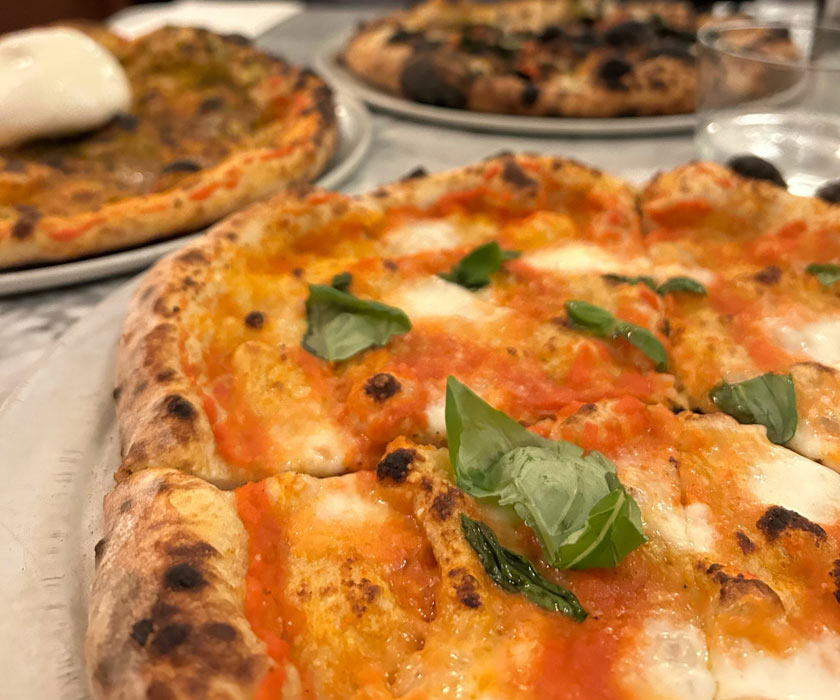
Yeasty Does It
Every fall, I bake apple pies for family gatherings. As long as I follow my recipe card and use the same types of apples, the pies taste pretty much the same. So why is it so difficult for brewers to make consistent beer if they’re simply following a recipe?
The answer is that beer is alive.
Though it’s crucial to the brewing process, yeast can be an overlooked ingredient in beer, even among craft beer fans. Different strains of yeast have a profound effect on a beer’s characteristics. And, in fact, yeast is the only thing that can transform a slush of grain-based sugar water into the beverage we love to drink. But as a single-celled microscopic organism, it often gets less respect than it deserves.
Take, for example, a hefeweizen. The cloudy, aromatic beers brewed in this style get most of their flavorful esters from the use of a particular variety of yeast, one that produces banana, fruity and clove-like flavors as part of its natural environment. I used to think “hefe” meant “half,” because typical hefeweizens are made with a fairly even ratio of regular grains and wheat (weizen). Turns out I was wrong. “Hefe” refers to the yeast, so it’s more properly called a “yeast wheat” beer.
Brewing a hefeweizen — or any beer, for that matter — can be more akin to ranching than baking. Brewers have to wrangle and tame these living organisms. The brewing process seems simple: create a mix of fermentable sugars and water, put in a little yeast that likes to eat those sugars, and the little guys will magically produce beer. However, getting yeast to consume the sugars you’ve provided them, at the rate you’d like, while reproducing and creating CO2 and alcohol as waste products, is harder than it seems.
To create a flavorful beer, brewers have to pamper yeast by giving it exactly the right range of temperatures (sometimes only a few degrees apart) and adjusting acidity (pH) or other water chemistry. They may also have to provide extra food or oxygen to coax them into doing their thing. Batches of yeast can be different from one another even if they’re the same species — yeast can get lazy, can starve or eat too quickly, can die off too quickly or grow too fast, sometimes leaving behind undesired off-flavors.
Brewers need to actively control the lives of these organisms and then prevent them from dying before their time. In high-alcohol beers, the alcohol that the yeast produces as waste will ultimately kill them off. Yeast strains that can tolerate higher levels of alcohol in their environment have been specifically bred for the task, but most of the time brewers are just pushing the boundaries of what the yeast can tolerate each time they create a high ABV beer.
In most cases, brewers carefully select yeast that will impart certain characteristics: the estery notes of the hefewizen, the dry finish of a lager, or the peppery notes in saisons. But if you want even more of a challenge, try letting just the local yeast show up and see who applies for the fermentation job.
Allagash Brewing has a vessel known as a “Coolship” that’s essentially a shallow stainless-steel pan sitting in the center of a little shed. They pour wort that’s been boiled into the pan to cool, and then leave the windows of the shed slightly ajar, so the night air can come in. The natural yeast in the area (and yes, there’s yeast everywhere!) slowly settles onto the cooling liquid and begins munching away on the sugars. The result (which is sometimes aged in barrels long after this process) is a funky and complex mix of flavors derived from the unique terroir of the area where the beer is produced.
Other breweries have learned to use natural selection to their advantage. Barreled Souls, for example, uses a “Burton Union” brewing system that’s specifically designed to get the heartiest yeast possible to ferment each batch of beer. In that system, fermentation vessels (barrels) are connected with pipes in such an arrangement that the yeast travels up into a catchment tank, where it’s later separated from the beer and reused in subsequent batches. This captured yeast essentially self-selects for the most effective and hearty cells.
The next time you raise a pint, give some thought, and some thanks, to the little beasts that brought the flavors into your glass — and to the brewers who made them behave.




